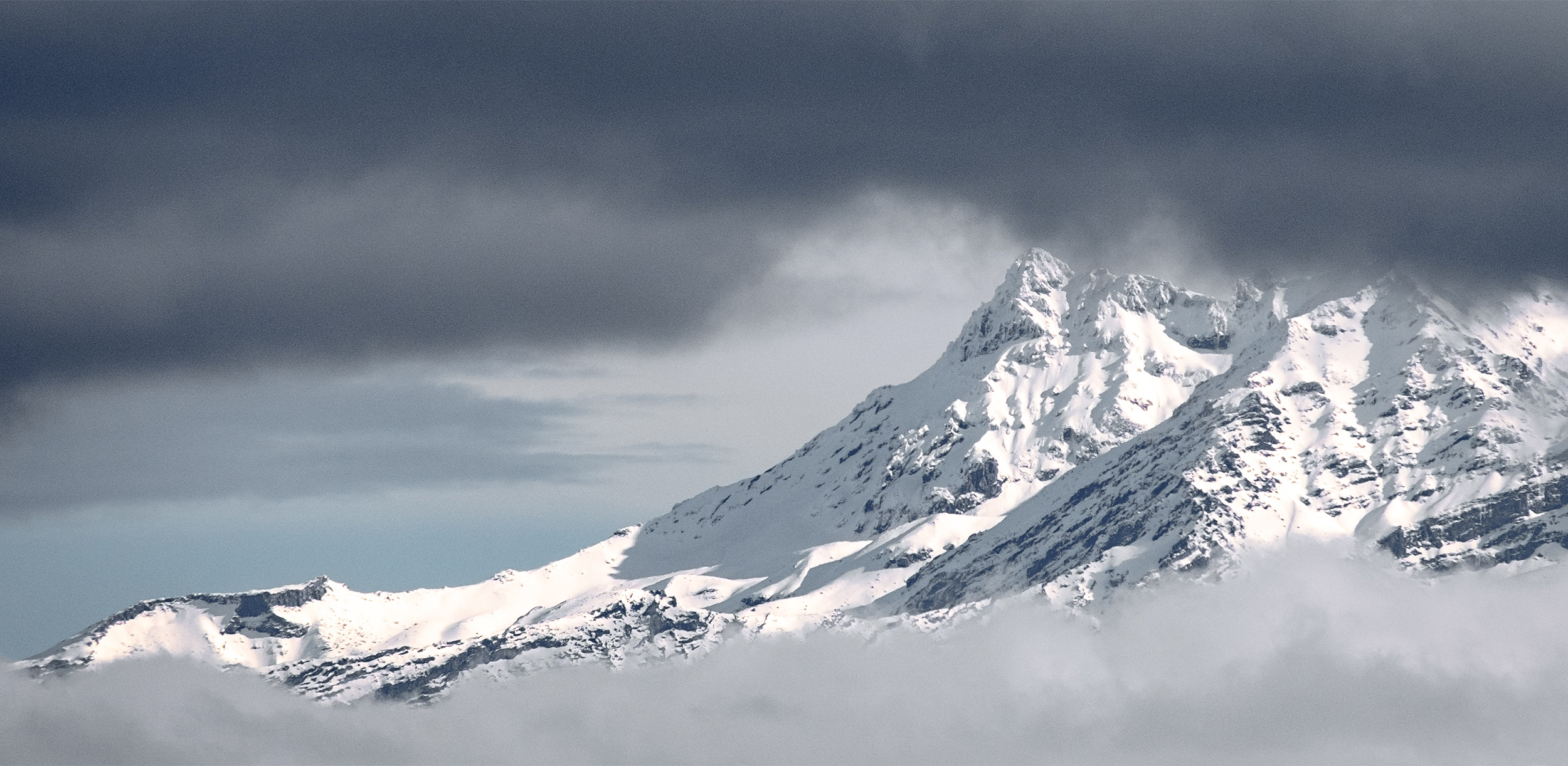
23 Sep Monthly Practice: Look, Reflect, Give Thanks
I was five when Mount Ruapehu erupted in 1996. It let fly with a series of spectacular gas explosions, heaving hot ash into the sky and across most of the Central Plateau. From our house on the outskirts of Palmerston North, we could look across the land and see smoke billowing out of the mountain 150km away. That was far too close for my anxious child’s mind; I was convinced the lava would flow so freely and so far that our house would be engulfed in a river of fire. Terrifying stuff for a child to comprehend, really. And a real headache for my parents, as they explained “for the umpteenth time” my fire escape route (out my bedroom window, across the roof, and a small leap onto our front lawn––I didn’t forget).
It’s a funny childhood memory, but, sometimes, it feels like not much has changed. When sensing danger or uncertainty on the horizon—real or perceived—I’m often reduced to that same childlike fear. My mind goes into overdrive, trying to figure out every contingency plan while I contend with the ever-present “What if…?” questions. At worst, it’s full-blown anxiety. But often it’s a low-grade, simmering worry.
Perhaps this is familiar for many of us in Auckland and across Aotearoa, New Zealand. We might feel on the brink of our worst-case fears being actualised: health fears from the global pandemic; income concerns due to Alert Level restrictions; and family and relational strains. Sometimes we’re just worried about being worried—knowing the stress it can place on our relationships, our mind, and our bodies.
While I’ve yet to crack the “worrywart” bug, there are some things that continue to offer a much-needed change of perspective. One of these things was found seven years ago as I was running the western trail of Maungawhau, Mount Eden.
The western side of the maunga was once a barren rock face known as Batger Quarry and has since been largely restored with native vegetation. There’s a trail that hugs the side, and, halfway round, there’s a small set of stairs and two large tree stumps. These mark a lookout across the western suburbs of Auckland city. You can even see the waters of Waitemata Harbour. Across the years, my running routes often incorporate thin spaces: points of prayer, space, and attention, where I would find myself close to God. This is one of those spaces.
In my early 20s, while juggling a full-time internship (unpaid) with part-time hospitality work (only slightly paid), I would weave this Maungawhau thin space into my running routes. One day, while feeling particularly anxious about my meagre income, I found myself watching a small gathering of birds, flitting through the branches of a tall pohutukawa.
I was arrested. It was a familiar scene, but this day felt different somehow. It’s like I was watching Jesus’s words from Matthew 6:26–27 dance through the trees:
Look at the birds of the air, for they neither sow nor reap nor gather into barns; yet your heavenly Father feeds them. Are you not of more value than they? Which of you by worrying can add one cubit to his stature?
Look. This time I heard Jesus’s words clearly. Look. Look at how these birds weave together through the late winter branches, not fretting for food nor shelter. Look at how they eat what they find and continue on with their simple bird ways. Look at how they dance together, caring for their young. Look at how our heavenly Father feeds them. They don’t worry about finances or about what the future holds. They don’t ask the unanswerable “What if…?” They just live and breathe and do the simple tasks their creator made. Look.
In that moment of worry, I needed to be stilled by God’s good ordering of the world. I needed to be reminded that worrying doesn’t add years, hours, or minutes to my life, and it rarely solves any problems. I haven’t yet outgrown the need to look at God’s good creation, nor to be reminded of God’s promises of love and care for us. Perhaps you haven’t either.
This is not a complicated practice, and it’s likely you already know about the goodness of looking at creation. But if you’re anything like me, there’s a chasm between knowing about the benefits of something and practicing that knowledge. Scripture is full of instruction to not worry or to be afraid. The Psalms are constantly drawing our attention back to creatures and creation as examples for our Christian life. So, this practice is designed to draw our attention back to God’s goodness by looking at the birds, as it were.
This month, we invite you to:
i. Mark in your calendar one lunch break during the week when you can spend 30 minutes in stillness. Try to stick to this day even if work or life demands creep in. It’ll be worth it.
ii. Read aloud the words of Matthew’s gospel—Matthew 6:25–34. Feel free to also read the earlier passage addressing the worship of money; it offers significant framing for many of our worries.
iii. Fix your attention on a part of creation: a colony of ants, the waving tree across the road, the clouds moving across the sky, or anything that’s part of nature.
iv. Watch God’s creation for 20 minutes; write down what you observe. Take note of any words, phrases, or passages of Scripture that come to mind. If worries or concerns fight for your attention, acknowledge them and offer them to God’s care. Spend time here; there’s much to see and hear.
v. Close in prayer, thanking God for the goodness of his creation. You might want to pray this prayer, taken from the Seeking God’s Face devotional and adapted from the Westminster Larger Catechism.
Strong and mighty God,
retrieve holy fear for you from the depths of fright and anxiety.
Make me deeply intimate with your awesome presence
and mightily aware of your costly mercy.
Mingle in my heart a holy fusion of reverence, love, awe, and trust,
freeing me to lovingly, willingly yield my all to you.
In Jesus’s name, amen.
(Image: Mount Ruapehu, captured by Alex Green)

